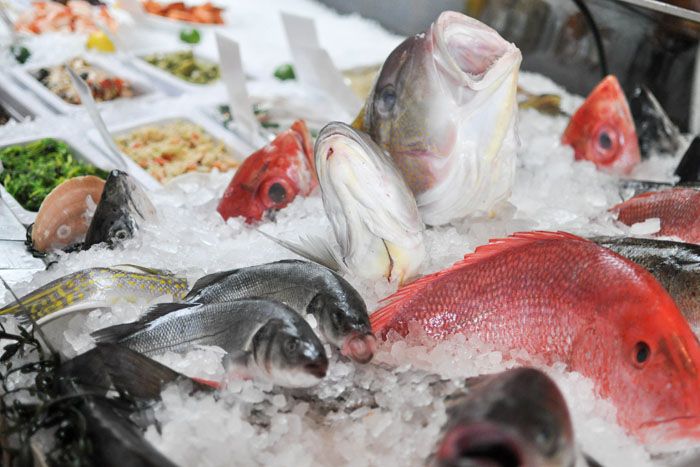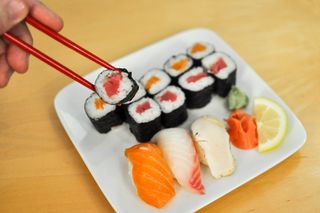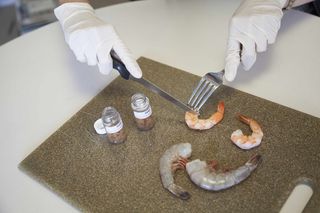
Shrimp-Labeling Fails Mean Mystery Meal Origins (Op-Ed)

Beckie Zisser is an ocean advocate for Oceana. She contributed this article to Live Science's Expert Voices: Op-Ed & Insights.
Trust lies at the foundation of every food label, most importantly in the accuracy of the information. Unfortunately, as more and more food-testing studies surface revealing food fraud, consumers are realizing they cannot always trust what they are eating. This is a particularly acute problem with seafood, where often a diner is getting a completely different species than the one ordered.
Seafood fraud is any misrepresentation of seafood: Falsified documents, too much ice added to packaging, species substitution and products that are mislabeled as species of higher value. Last year, Oceana found that one-third of over 1,200 fish samples tested nationwide were mislabeled according to U.S. Food and Drug Administration (FDA) guidelines. Most often, that practice is done to sell a less desirable species as a more desirable one, ensuring the sale of the product for a much better price.

Same taste, different fate
So if it tastes the same, why does species substitution actually matter? For one, Oceana found fish that carry health advisories are being sold as safer choices. King mackerel, one of four species of fish the FDA recommends children and pregnant women avoid, was found sold as grouper in Florida. Escolar, a species of fish that Japan and Italy have banned and against which other nations have issued health advisories due to it causing mild to severe gastrointestinal problems, is often labeled as "white tuna" in U.S. sushi bars. [Seafood Mystery Meals (Gallery )]
In addition, certain overfished species are frequently sold as better-managed species, such as the severely depleted Atlantic halibut being sold as less-threatened Pacific halibut.
Many people are unaware of the long and complex global supply chain a fish travels to get to your dinner table. From the fisherman to the docks, through the processor, distributor, and to the end retailer, every step of the supply chain has an opportunity for a dishonest actor to commit fraud. In fact, fish products often travel back and forth through multiple processors and across multiple borders before they finally make it to a grocery store, restaurant or fish market. Even country-of-origin labels can be misleading, as many labels only have to show where the product was last processed instead of where it was caught or harvested. [Five Deep-Sea Fish on Brink of Extinction ]
Sign up for the Live Science daily newsletter now
Get the world’s most fascinating discoveries delivered straight to your inbox.
Fraud occurs all over the world. Even the United Kingdom's beloved fish and chips dish isn't safe from mislabeling. A British consumer watchdog group, found samples of cheaper fish mislabeled as cod and haddock when it conducted DNA testing earlier this year.

There is more to "shrimp" than the name
Fraud is notjust a problem with fish; it plagues other types of seafood as well. Oceana recently released a report on shrimp misrepresentation that found that 30 percent of the shrimp products tested from New York, Washington, D.C., Portland, Oregon, and the Gulf region were misrepresented in some way.

In that study, Oceana found farmed shrimp labeled as wild-caught, different species commingled together in packaged shrimp sold in grocery stores, and one of the samples was even found to be banded coral shrimp, which is an aquarium pet and not intended to be consumed as food.
Survey results of grocery store labels and restaurant menus in the same report showed that the vast majority of restaurant products, and a great deal of grocery store products, did not provide the information consumers needed to make responsible, informed choices, such as country of origin or whether it was farmed or wild.
Fortunately, there is a solution to cracking down on this dishonest behavior. This summer, U.S. President Barack Obama announced a commitment to fight seafood fraud and illegal, unreported and unregulated fishing by creating an inter-agency task force to address these growing challenges. The task force will issue recommendations in December on how to best deal with fraud and illegal fishing. One possible solution is to require traceability, which would ensure consumers have more information about the origins of their seafood.
In order to truly combat fraud and mislabeling, there must be accountability and transparency in the seafood supply chain. This must include the transfer of information — from the point of catch or harvest to the end consumer — about where, when and how a fish was caught or harvested, whether it was wild-caught or farmed, and any transformation it underwent along the way. All seafood in the United States should be safe, legally caught and honestly labeled, but until traceability is implemented, consumers may want to think twice about ordering their favorite seafood dish.
Follow all of the Expert Voices issues and debates — and become part of the discussion — on Facebook, Twitter and Google+. The views expressed are those of the author and do not necessarily reflect the views of the publisher. This version of the article was originally published on Live Science.













